Tips for Dealing with Acoustic Shock
A ‘How to’ guide:
What you need to know about the EU Noise at Work Directive
- In Europe, anyone who wears headset should, by law, be protected for amount of noise exposure to his/her ears.
- You should demand to be protected for noise exposure limits from your employer.
- The directive says that no one wearing headset should be exposed to a sound pressure level (SPL) of more than 85decibels (85 dB SPL) in any eight hours shift in a 24-hour cycle.
- This directive does not protect you against acoustic shocks. You need to have a more comprehensive device to do that.
How to reduce the risk of acoustic shock to staff
- Perform initial and annual audits of the work environment, labour and management needs.
- Make an assessment of noise exposures.
- Evaluate the engineering and administrative control of noise exposures. Spread agents locations as wide apart as possible in the call centre. This will reduce the agent use of high volume levels. Also, use sound absorption materials for the partitions and walls as this will also reduce the agent use of high volume levels.
- Undertake audiometric evaluation and monitoring of hearing.
- Make appropriate use of personal hearing protection devices. Use equipment that is capable of reducing or eliminating the acoustic shocks. At the very least, have the right equipment in place to offer the minimum protection: that is, ensure that the kit is at least EC Noise Directive compliant. This is not sufficient, but could reduce the effect of acoustic shock.
- Consider education and motivation. Set up training sessions for EU Noise Directive and Acoustic Shocks safety needs – something that can be done by bringing the appropriate and independent expertise from the Health and Safety Executive (HSE) or the Acoustic Safety Programme. Remember: educational methods and materials should be tailored to the specific audience. The goal of education and training is not just to inform, but also to motivate. Dynamic, relevant training will imbue workers with a sense of personal control over their hearing health, lead to the development of intrinsic motivation to adopt positive hearing health.
- Make sure you keep records. This will help you regularly maintain the equipment and logging thereof. Remember to log any acoustic occurrence and incident.
- Undertake a programme evaluation to ensure effectiveness.
How to spot and deal with the symptoms of acoustic shock
- Immediately after a suspected acoustic shock event, look for discomfort or pain around ears, muffled hearing, fatigue, nausea and/or dizziness.
- In the hours or days after the event, look for signs of tinnitus, high sensitivity to sounds, and/or an agent’s loss of sense around sound direction.
- Remember that longer-term effects can include anxiety. This might manifest itself as a phobia or depression.
- Watch for regular agent absences due to illness.
- Keep a record of maintenance around the headsets and consoles.
- Then you are sure an agent is suffering from acoustic shock, recommend they go to their doctor and preferably to an audiologist.
- To prevent this happening, have a physician visit the site at least one or two times a year.
What to do if you are presented with an acoustic shock claim
- Keep a record of all the incidence/accidents.
- Keep account of the acoustic shock protector equipments used in your business.
- Keep evidence of maintenance of headsets and consoles.
- Keep notes on all your headset and acoustic shock related training sessions and what materials were used in those sessions.
- Keep record of the hearing health status of your staff and business by regularly inspecting it. This is a good thing to do especially when an agent is employed for the first time.
Contributed by Masoud Ahmadi, managing director of Tecteon technologies
Author: Jonty Pearce

12 Comments
-
You will understand why I won’t leave my name after reading this.
Just over a week ago my company expanded to new premises, all equipment including headsets are brand new.
There is a problem – myself and most of the call centre staff are suffering from painful inner ear and nausea, we believe, are caused either by cheap headsets or new phone system. We were not allowed to use our already reliable headsets.
When a call comes through one can hardly hear the caller so turn up the sound only to suffer deep voice distortion or shrill piercing voice.
Call ends then the next call comes through with a very loud sharp beep, so back to the volume control, clients voice is turned down in volume and up again because volume seems to change in waves.
At the end of the shift we are left with headaches, sickness, stressed out and various ear symptoms such as very sensitive pain in the ears, bunged up ears feeling, motion sickness when travelling home in car or bus but worst of all a painful throbbing which lasts all night.
This problem was notified to management on day 5 in our new building and still we’re suffering, not sure if it’s being taking seriously by my bosses.
We don’t have a union, so where do we stand in this?
A few girls will not take calls until this is sorted but they are in fear of losing their job. Another girl was left in tears. Another one has visited her GP.
anon
3 Jul at 17:20
-
i have just read the comment already posted and like yourself, wish to remain anonymous. Please read up on acoustic shock.. I worked from a company and had exactly the same symptoms, nausea, head pain and dizziness. I eventually got tinnitus six months later and two years on i still have it and it has got louder and my concentration is severely affected. I carried on using a headset and became so ill i had to give up work for a long time. I would never wear a headset again and have had to change careers because of it. If youn want my advice, act now..
anon
16 Jul at 13:02
-
Newer headsets now have a diode fitted which blows and renders the headset useless if the sound levels go above 85 dB.
Rob
22 Oct at 17:35
-
No they don’t – I work with all the headset manufactuers, there is only one headset on the market that has in built protection against accoustic shock – That is the Sennheiser Range.
All other Headset Brands Plantronics/Jabra Gn/ Voice Activ/Alphacom/Agent all require additional item to be connected to the phone or headset before any protection is offered.
Anonymous
24 Nov at 16:44
-
All Headsets with CE Mark are set to limit expossure over 115DB – thats true with all but Sennheiser.
Anonymous
19 Mar at 17:19
-
Please let me correct a number of misconceptions and errors in the preceding comments.
1. ALL headsets in the UK from reputable manufacturers are equipped with diodes which prevents sound levels above 118dB being passed to the ear.
2. This level is loud and simply prevents hearing damage in the time it takes to remove the headset.
3. A number of headset manufacturers produce “acoustic shock prevention” devices for their headsets to plug into. They are relatively primitive devices that simply attenuate (raise or lower volume of) incoming sound. This means that if a loud noise comes in the unit will suppress all sound that the headset wearer hears including the caller’s voice.
4. Noise at Work regulations demand that headset wearers are not exposed to more than a certain amount of noise in any given shift. The aforementioned devices try to make their brand of headset conform to this by different means. One manufacturer takes the prescribed level, say 84dB, and raises volume that is below that level or lowers volume that is above it to ensure that everything is at, say 84dB. Another manufacturer’s offering tries to predict the total noise exposure over a shift by extrapolising current levels and progressively clamping down on or increasing the volume available to the headset wearer. This is comparable to those trip computers in some cars which predict your fuel range based on present consumption and use comparitive, rather than absolute, measurement criteria.
5. There is only one system (Polaris Soundshield) which fully protects headset wearers and, understandably, it is headset-independant. Rather than being designed to compensate for the shortcomings (real or perceived) of the manufacturers’ headsets it was designed by the National Acoustic Laboratory of Australia in conjunction with hearing specialists. Consequently it can give greater protection than the most high-falutin’ top of the range headset-adaptor combo even when used with a cheap, workhorse headset.
Derek Barnes
28 Jul at 11:36
-
Good points, Derek. Soundshield’s patented shriek rejection capability coupled with it’s detailed noise dosimetry package mean that it can be used even with cheaper office headsets.
telephoneheadsetsguy
12 Dec at 19:21
-
I think I have just had this. I am working on contract for a call centre and am off work due to my ears being so bad. Worst thing is that work wont pay me any sick pay – I would be fit and healthy if I wasn’t working for them! So bloody annoyed – seems we don’t have a leg to stand on!
annon
6 Apr at 16:57
-
i am currently studying acoustic shock for a course i am taking. i do also work in a headset environment in a large office. I would be interested to hear of anyones experiences of acoustic shock, temporary real or perceived. i myself suffer from the confused hearing loss, unable to clearly know which direction noises are coming from. especially dangerous when you have police, ambulance or fire engine sirens coming close to you. not knowing the direction they are coming from makes it difficult to remove yourself from their way eg at a roundabout… my sleep is also disturbed on occassion, by low drumming noises. this has only happened over the past 5yrs whilst working a lot on the telephone section of my department. a lot of customers answer the phone whilst holding a screaming baby or have a parrot screeching behind them, some shout down the phone suddenly, the noise seems intensified when it is held in a headpiece….
caroline
29 May at 21:59
-
I am working in a call centre and my ears just feel sour and have some pressure related issue, for example, if I use the head set on my right ear I feel pressure in my left ear, is that connected to acoustic shock? thanks for your help 🙂
Nick
14 Nov at 15:29
-
I was a few feet away from a coworker when she reported a very painful blast of sound through her headset recently. She was crying and shakey, and the ear I could see, as well as a couple inches of the skin surrounding the ear, were very reddened. This was a few minutes post injury and she said it still hurt very much. Both our Human Resources Department and Information Technology seemed to have no idea what had happened to cause the injury. How could they not know abt. acoustic shock injury by now? Since a couple years after starting working at my call center, I have had ridiculously hypersensitive hearing. Everything in my environment seems too loud and I’m also ridiculously irritable most of the time, but especially when there’s any noise in my environment like small children make, or traffic. It’s like my nervous system is all revved up most of the time for no particular reason. Now I know why.
Lori
3 Oct at 18:50
-
I have just recently started working as a medical interpreter remotely. I started mid August 2015 to be more exact. The pain in my ears is slowly increasing and last night I noticed a a painful bump behind my right ear which is the appear I usually put the headset over my right ear which is my good ear. I’m highly considering going back to in-person interpreting after learning about “acoustic shock”. The last thing I want is to loose the hearing in my right ear!
Anonymous
15 Sep at 15:07
Get the latest call centre and BPO reports, specialist whitepapers and interesting case-studies.




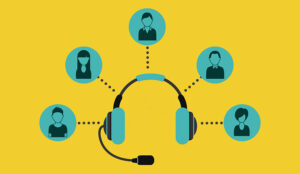


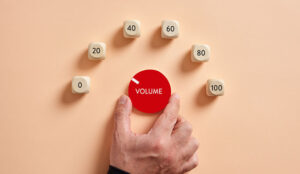
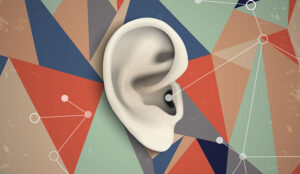
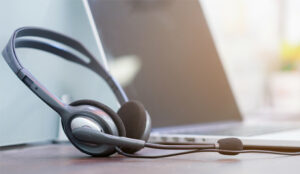

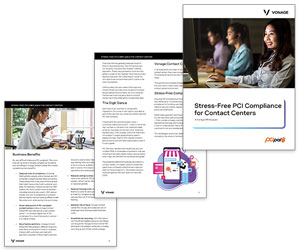





You will understand why I won’t leave my name after reading this.
Just over a week ago my company expanded to new premises, all equipment including headsets are brand new.
There is a problem – myself and most of the call centre staff are suffering from painful inner ear and nausea, we believe, are caused either by cheap headsets or new phone system. We were not allowed to use our already reliable headsets.
When a call comes through one can hardly hear the caller so turn up the sound only to suffer deep voice distortion or shrill piercing voice.
Call ends then the next call comes through with a very loud sharp beep, so back to the volume control, clients voice is turned down in volume and up again because volume seems to change in waves.
At the end of the shift we are left with headaches, sickness, stressed out and various ear symptoms such as very sensitive pain in the ears, bunged up ears feeling, motion sickness when travelling home in car or bus but worst of all a painful throbbing which lasts all night.
This problem was notified to management on day 5 in our new building and still we’re suffering, not sure if it’s being taking seriously by my bosses.
We don’t have a union, so where do we stand in this?
A few girls will not take calls until this is sorted but they are in fear of losing their job. Another girl was left in tears. Another one has visited her GP.
i have just read the comment already posted and like yourself, wish to remain anonymous. Please read up on acoustic shock.. I worked from a company and had exactly the same symptoms, nausea, head pain and dizziness. I eventually got tinnitus six months later and two years on i still have it and it has got louder and my concentration is severely affected. I carried on using a headset and became so ill i had to give up work for a long time. I would never wear a headset again and have had to change careers because of it. If youn want my advice, act now..
Newer headsets now have a diode fitted which blows and renders the headset useless if the sound levels go above 85 dB.
No they don’t – I work with all the headset manufactuers, there is only one headset on the market that has in built protection against accoustic shock – That is the Sennheiser Range.
All other Headset Brands Plantronics/Jabra Gn/ Voice Activ/Alphacom/Agent all require additional item to be connected to the phone or headset before any protection is offered.
All Headsets with CE Mark are set to limit expossure over 115DB – thats true with all but Sennheiser.
Please let me correct a number of misconceptions and errors in the preceding comments.
1. ALL headsets in the UK from reputable manufacturers are equipped with diodes which prevents sound levels above 118dB being passed to the ear.
2. This level is loud and simply prevents hearing damage in the time it takes to remove the headset.
3. A number of headset manufacturers produce “acoustic shock prevention” devices for their headsets to plug into. They are relatively primitive devices that simply attenuate (raise or lower volume of) incoming sound. This means that if a loud noise comes in the unit will suppress all sound that the headset wearer hears including the caller’s voice.
4. Noise at Work regulations demand that headset wearers are not exposed to more than a certain amount of noise in any given shift. The aforementioned devices try to make their brand of headset conform to this by different means. One manufacturer takes the prescribed level, say 84dB, and raises volume that is below that level or lowers volume that is above it to ensure that everything is at, say 84dB. Another manufacturer’s offering tries to predict the total noise exposure over a shift by extrapolising current levels and progressively clamping down on or increasing the volume available to the headset wearer. This is comparable to those trip computers in some cars which predict your fuel range based on present consumption and use comparitive, rather than absolute, measurement criteria.
5. There is only one system (Polaris Soundshield) which fully protects headset wearers and, understandably, it is headset-independant. Rather than being designed to compensate for the shortcomings (real or perceived) of the manufacturers’ headsets it was designed by the National Acoustic Laboratory of Australia in conjunction with hearing specialists. Consequently it can give greater protection than the most high-falutin’ top of the range headset-adaptor combo even when used with a cheap, workhorse headset.
Good points, Derek. Soundshield’s patented shriek rejection capability coupled with it’s detailed noise dosimetry package mean that it can be used even with cheaper office headsets.
I think I have just had this. I am working on contract for a call centre and am off work due to my ears being so bad. Worst thing is that work wont pay me any sick pay – I would be fit and healthy if I wasn’t working for them! So bloody annoyed – seems we don’t have a leg to stand on!
i am currently studying acoustic shock for a course i am taking. i do also work in a headset environment in a large office. I would be interested to hear of anyones experiences of acoustic shock, temporary real or perceived. i myself suffer from the confused hearing loss, unable to clearly know which direction noises are coming from. especially dangerous when you have police, ambulance or fire engine sirens coming close to you. not knowing the direction they are coming from makes it difficult to remove yourself from their way eg at a roundabout… my sleep is also disturbed on occassion, by low drumming noises. this has only happened over the past 5yrs whilst working a lot on the telephone section of my department. a lot of customers answer the phone whilst holding a screaming baby or have a parrot screeching behind them, some shout down the phone suddenly, the noise seems intensified when it is held in a headpiece….
I am working in a call centre and my ears just feel sour and have some pressure related issue, for example, if I use the head set on my right ear I feel pressure in my left ear, is that connected to acoustic shock? thanks for your help 🙂
I was a few feet away from a coworker when she reported a very painful blast of sound through her headset recently. She was crying and shakey, and the ear I could see, as well as a couple inches of the skin surrounding the ear, were very reddened. This was a few minutes post injury and she said it still hurt very much. Both our Human Resources Department and Information Technology seemed to have no idea what had happened to cause the injury. How could they not know abt. acoustic shock injury by now? Since a couple years after starting working at my call center, I have had ridiculously hypersensitive hearing. Everything in my environment seems too loud and I’m also ridiculously irritable most of the time, but especially when there’s any noise in my environment like small children make, or traffic. It’s like my nervous system is all revved up most of the time for no particular reason. Now I know why.
I have just recently started working as a medical interpreter remotely. I started mid August 2015 to be more exact. The pain in my ears is slowly increasing and last night I noticed a a painful bump behind my right ear which is the appear I usually put the headset over my right ear which is my good ear. I’m highly considering going back to in-person interpreting after learning about “acoustic shock”. The last thing I want is to loose the hearing in my right ear!